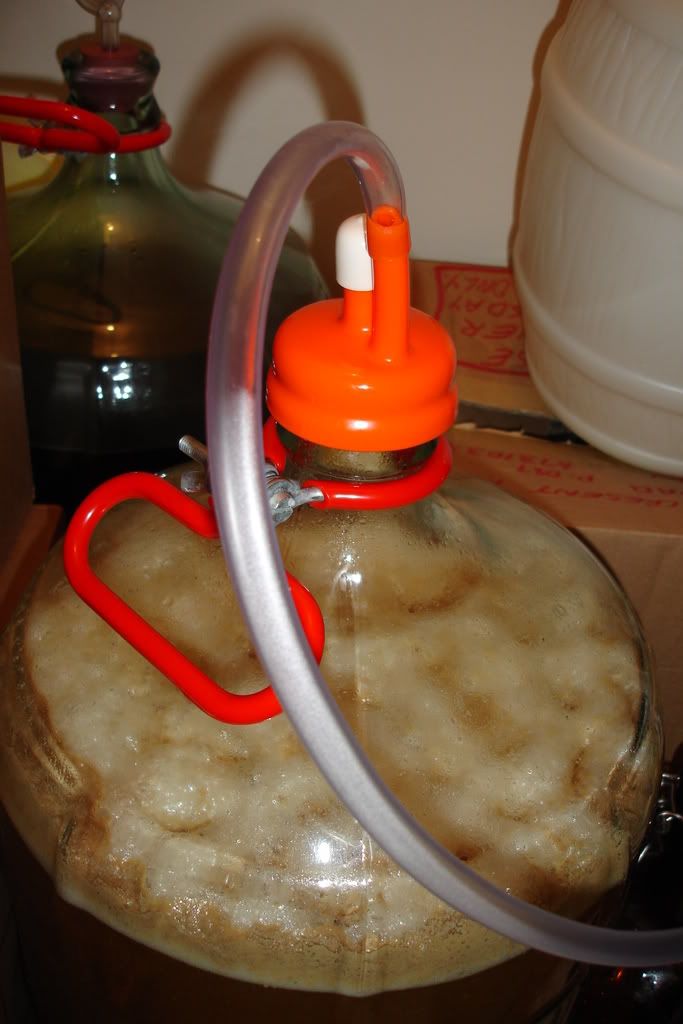 Last weekend saw another attempt to brew a straightforward ale. It looked a little like this:
Last weekend saw another attempt to brew a straightforward ale. It looked a little like this:4.6 kg Maris Otter
250g 120L crystal malt
Pilgrim 11.3% 60 mins
Willamette 4.4% 20, 10, 5, 0 mins
Mashed at 66 C
OG 12 Plato
Saf 05
This beer has a number of new elements; I have never used Pilgrim or Willamette before and look forward to see what kind of flavour they'll give the beer; I loaded the water with calcium sulphate and calcium chloride, bringing the the calcium concentration up to around 250ppm which will have aided the mash, break formation and the yeast in their work as well as adding fullness to the beer and enhancing hop character; finally I used my new wort chiller which proved very effective, dropping the temperature very rapidly initially but also got the wort to room temperature far quicker too. Along with this I tightened up just about everything else in the process to try and get a clean tasting beer. I'll keep you posted.
5 comments:
"I loaded the water with calcium sulphate and calcium chloride, bringing the the calcium concentration up to around 250ppm"
Are these to match conditions in a particular area or just a general experiment to see what it does?
Purely experimental old boy. But it should help the process no end.
Burton ale in the early days was noted for its wonderful clarity and it was later discovered that it has around 700ppm calcium sulphate. This helps in break formation and lots of other aspects of the brew.
Hope this brew works out ok!
Recipe looks good. One of the biggest improvements you'll make to your beers is temperature control during fermentation. S-05 I think maybe more tolerant of higher fermentation temps. Even if you're fermentation are is cool, the fermentation will usually generate 5-7+ degrees more heat. Good luck, I'm curious how this turns out for you.
I am painfully aware of my lack of fermentation temperature control.
The room I ferment in is at around 18 C and it has always bothered me that the fermentation temp strays out of the the desired range. I'm working on it, but space is an issue. Once I get it under control I reckon I can brew flawless beer, without any of the taints caused by above optimal fermentation temperature.
Post a Comment